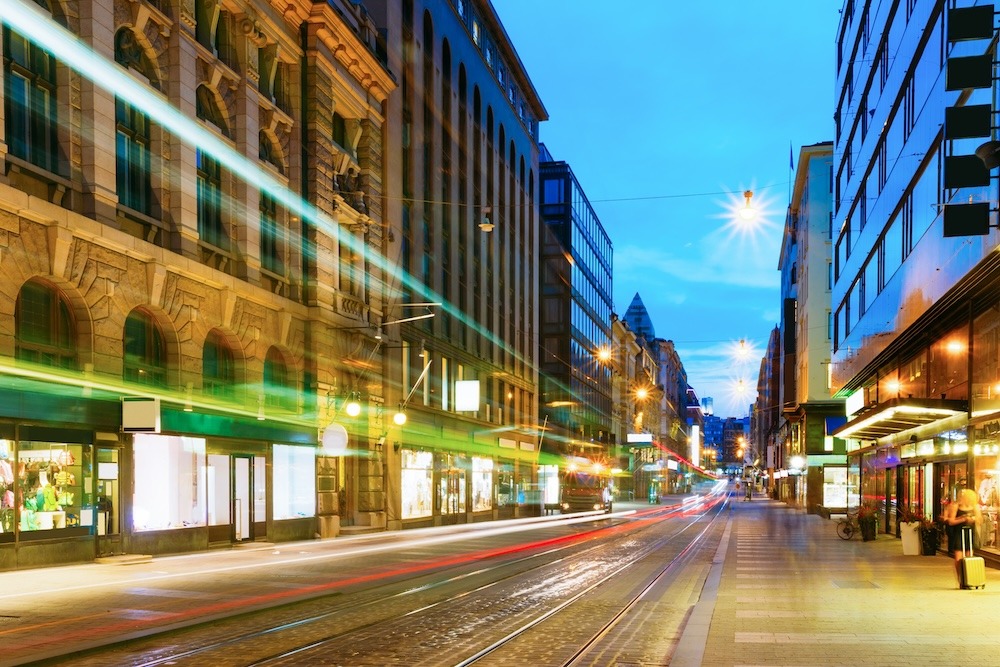In the dynamic landscape of modern urban development, the integration of Artificial Intelligence (AI) into data analytics frameworks is reshaping the way Smart Cities operate. Among the multiple applications of AI, one particularly transformative aspect is its role in people counting and footfall analytics.
With the current increase in demand for the so-called "15-minute-cities" - a city where most daily necessities and services such as work, shopping, education, health care, and leisure can be easily reached with a 15-minute walk, bike ride, or public transport ride from any point in the city - it might be worth looking into innovative solutions that can future-proof your city in a digital era.
This article delves into the significance of AI-powered data analytics in Smart Cities, focusing on the vital components such as people counting sensors, tenant management, and retail traffic analysis, and how they help cities become smarter.
Harnessing People Counting Sensors for Enhanced Insights
At the heart of data-driven decision-making in Smart Cities lie people counting sensors. These sensors utilize AI algorithms to accurately track and count individuals passing through various urban spaces. By strategically deploying people counting sensors across key locations such as retail centers, transportation hubs, and public squares, city administrators gain invaluable insights into pedestrian flow, congestion patterns, and utilization rates.
Unveiling the Power of Footfall Analytics
Footfall analytics, driven by AI, offer deep insights into visitor counting and customer flow dynamics. By analyzing data collected from people counting sensors, Smart Cities can discern peak footfall hours, popular routes, and visitor demographics (age and gender). This wealth of information empowers urban planners and businesses alike to optimize resource allocation, enhance infrastructure planning, and tailor marketing strategies to better serve the needs of the community.
Enhancing Tenant Management with AI-driven Insights
Effective tenant management is crucial for the sustainable growth of urban commercial spaces. AI-powered analytics platforms enable property managers to monitor tenant performance, assess lease occupancy rates, and identify areas for improvement. By leveraging data on customer flow and retail traffic, landlords can make informed decisions regarding tenant selection, lease negotiations, and space utilization, fostering a vibrant and thriving urban ecosystem.
Mapping the Customer Journey with Precision
Understanding the customer journey is crucial for delivering exceptional urban experiences. AI-powered data analytics platforms, such as Vemco Group's, map out the pathways that individuals use within Smart Cities, from initial point of entry to final destination. By analyzing customer flow data, city planners and businesses gain invaluable insights into navigation patterns, dwell times, and interaction points, enabling them to design more efficient transportation networks, pedestrian-friendly environments, and engaging retail experiences.
To sum up...
As Smart Cities continue to evolve, the role of AI in data analytics becomes increasingly indispensable. From optimizing pedestrian flow to revolutionizing retail strategies, AI-powered solutions offer unparalleled insights into the dynamics of urban life.
Vemco Group harnesses the power of people counting sensors, footfall analytics, and customer journey mapping to help Smart Cities unlock new levels of efficiency and sustainability for their residents and visitors alike. Embracing AI-driven data analytics is not just a choice but a necessity for building smarter, more resilient cities of the future - and Vemco Group is there to help!
Do you want a smart "15-minute" city? And are you ready to embrace AI-driven people counting to achieve it? Contact Vemco Group today for a free consultation regarding your needs.





